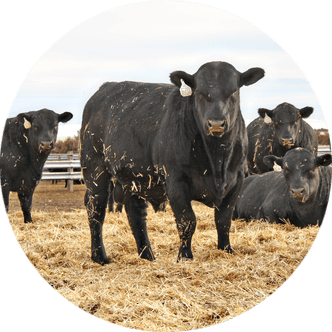UConn research improves bovine IVF, could have significant impact on industry
At the end of February, University of Connecticut (UConn) researchers announced their discovery of a new method for sperm capacitation which makes in vitro fertilization (IVF) of cattle more effective than ever before.
Sperm capacitation refers to a set of processes mammalian sperm must undergo while inside of the female reproductive system before they can fertilize an egg.
The process was first discovered in 1951 by independent researchers Min Chueh Chang and Colin Russell Austin, ultimately revolutionizing the world of human and animal reproduction through its role in development of IVF technology.
Recent research
According to a Feb. 23 article written by UConn personnel, the process of sperm capacitation activates a series of molecular pathways causing sperm to move in a very specific way – known as hyperactive motility – which is needed to successfully penetrate an egg and change the conformation of the sperm head to expose the part of the sperm that fuses with an egg during fertilization.
Previous research done by Marcia Gracia Gervasi, an assistant professor of animal science in UConn’s College of Agriculture, Health and Natural Resources, found improved sperm capacitation in mice when using a calcium ionophore to help bind and transport ions, and she wondered if this could be true in cattle as well.
In her recent study, Gervasi and a team of researchers introduced the calcium ionophore to a medium previously found to be required for bovine IVF, which contains calcium, bicarbonate, bovine serum albumin and heparin.
Increasing calcium levels in the medium caused sperm to stop moving, but when the calcium was washed away, sperm initiated hyperactive motility, indicating the researchers had induced capacitation.
“In this study, researchers found the ionophore achieved similar results as traditional IVF procedures without heparin,” the UConn research team explains. “However, when they tested the ionophore with heparin, there were significant improvements in fertilization rates and embryo development.”
Ultimately, the study found fertilization rates of sperm treated with the calcium ionophore was 83 percent, compared to 70 percent in the untreated group, and the rate of fertilized eggs that developed into embryos increased from 11 percent to 27 percent.
Industry impacts
According to the research team, these findings could have a significant impact on the cattle industry in the U.S. and across the globe, as IVF treatment in cattle has recently surged in popularity.
“This is because it is much easier to take semen from a bull with characteristics a producer wants to introduce in a herd and ship the semen or embryos rather than moving the bull around,” the scientists say.
Additionally, Gervasi notes this simple sperm treatment has the potential to double the number of embryos grown through IVF, especially improving fertilization and embryo development rates for cryogenically-preserved, sexed semen.
“The process of sexing semen damages the sperm, leading to reduced fertilization rates,” Gervasi states. “Being able to test our treatment with those sperm would also be very applicable to what the industry is using nowadays.”
Moving forward
Gervasi’s interest in the matter is still strong, and in the future, she plans to conduct follow-up research to better understand if embryos produced from ionophore-treated sperm remain more successful than those produced without the treatment after being implanted into the female.
She also notes her interest in analyzing the genetic quality of embryos produced using these treatments.
Currently, however, Gervasi is working on a separate sperm treatment with the potential to be combined with the calcium ionophore treatment to “bolster improvements demonstrated in the study.”
“My lab here at UConn is focused on understanding how sperm and sperm treatments during capacitation can influence not only fertilization but post-fertilization events like embryo development,” Gervasi concludes. “So, I will definitely be focusing a lot on embryo quality and what the sperm is bringing to it.”
Hannah Bugas is the managing editor of the Wyoming Livestock Roundup. Send comments on this article to roundup@wylr.net.





